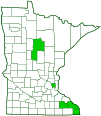Scudder’s short-wing grasshopper
(Melanoplus scudderi)
Conservation • Description • Habitat • Ecology • Distribution • Taxonomy
Conservation Status |
|
|||||||
| IUCN Red List | not listed |
|||||||
| NatureServe | N5 - Secure |
|||||||
| Minnesota | not listed |
|||||||
Description |
||
Scudder’s short-wing grasshopper is a medium-sized spur-throated grasshopper. It occurs in the United States east of the Great Plains, and in southern Ontario Canada. It is the most common short-winged Melanoplus in this area. It is uncommon in Minnesota, where it is at the northwest extent of its range. Nymphs are found in spring and early summer. Adults are found from August through November in dry to moderately moist, open, shrubby and weedy areas, and in woodland edges and openings. Adults are dull brown or reddish-brown. Females are ⅝″ to 1⅛″ (16 to 28 mm) long. Males are smaller, 9⁄16″ to 15⁄16″ (14.5 to 24.2 mm) long. The head is slightly wider than the exoskeletal plate covering the thorax (pronotum). The top of the head (vertex) is rounded in profile. The face is vertical. The antennae have 22 segments beyond the basal segments (scape and pedicel), and are no more than ½ the length of the body. There is usually a moderately to well-developed dark stripe behind each compound eye that continues on the pronotum to the second abdominal segment, but this is sometimes indistinct or absent. The pronotum is broadly convex above when viewed from the front, and is slightly ridged (keeled). It does not project over the abdomen. The shoulders are distinct and broadly rounded. The rear (posterior) margin is broadly rounded. There is a distinct, spiny bump (spur) at the base of the neck, between the base of the forelegs. There is a pair of flat, round, hearing organs (tympani) on the sides of the first abdominal segment. The lower end plate beneath the genitalia (the subgenital plate) is bulbous. On the male, the top edge of the subgenital plate abruptly curves upward. The sensory appendages at the end of the abdomen (cerci) are roughly boot shaped. On the female the ovipositor is short. The forewings (tegmina) are egg-shaped and short, usually extending just to the forward edge of the second abdominal segment. They may be shorter or slightly longer than the pronotum. The inner margins overlap or are only slightly separated. The tegmina are unmarked and uniformly dark. The hindwings are clear. On the hind pair of legs, the outer face of the robust, third segment (femur) is not banded. The upper (dorsal) face usually has two dark spots. The fourth segment (tibia) is red and has a row of 12 or 13 spines. The spines, at least at the tip, are black. On all of the legs, the end section corresponding to the foot (tarsus) has three segments. |
||
Size |
||
Male: 9⁄16″ to 15⁄16″ (14.5 to 24.2 mm) Female: ⅝″ to 1⅛″ (16 to 28 mm) |
||
Similar Species |
||
Habitat |
||
Dry to moderately moist, open, shrubby and weedy areas, woodland edges and openings |
||
Ecology |
||
Season |
||
August to November |
||
Behavior |
||
|
||
Life Cycle |
||
|
||
Nymph Food |
||
|
||
Adult Food |
||
Broad-leaved plants |
||
Distribution |
||||
|
Sources Haarstad, J. 1990. The Acrididae of Minnesota. Final report submitted to the Minnesota Department of Natural Resources. 28 pp. |
|||
| 9/18/2022 | ||||
Occurrence |
||||
Uncommon in Minnesota |
||||
Taxonomy |
|||
Order |
Orthoptera (grasshoppers, crickets, and katydids) | ||
Suborder |
Caelifera (grasshoppers, locusts, and allies) | ||
| Infraorder | Acrididea (grasshoppers) | ||
Superfamily |
Acridoidea (short-horned grasshoppers and locusts) | ||
Family |
Acrididae (short-horned grasshoppers) | ||
Subfamily |
Melanoplinae (spur-throated grasshoppers) | ||
Tribe |
Melanoplini | ||
Genus |
Melanoplus (North American spur-throated grasshoppers) | ||
Subordinate Taxa |
|||
Until recently three subspecies were recognized. The subspecies occurring in Minnesota was M. s. scudderi. A revision of the species published In 2015 raised two of the subspecies to species level. No subspecies are currently recognized. |
|||
Synonyms |
|||
|
|||
Common Names |
|||
Scudder’s short-wing grasshopper |
|||
Glossary
Femur
On insects and arachnids, the third, largest, most robust segment of the leg, coming immediately before the tibia. On humans, the thigh bone.
Keeled
Folded, as in a grass blade, or with a raised ridge, as in a grass sheath; like the keel of a boat.
Pronotum
The exoskeletal plate on the upper side of the first segment of the thorax of an insect.
Tarsus
On insects, the last two to five subdivisions of the leg, attached to the tibia; the foot. On spiders, the last segment of the leg. Plural: tarsi.
Tegmen
The modified, leathery front wing of some insects that protects the hindwing. It may also serve as a camouflage, a defensive display, or a sound board. Plural: tegmina.
Tibia
The fourth segment of an insect leg, after the femur and before the tarsus (foot). The fifth segment of a spider leg or palp. Plural: tibiae.
Tympanum
An external hearing structure. In reptiles and amphibians, the circular, disk-like membrane that covers the ear opening. In insects, the membrane covering the air sac and sensory neurons. Plural: tympani.
Visitor Photos |
|||||
Share your photo of this insect. |
|||||
| This button not working for you? Simply email us at info@MinnesotaSeasons.com. Attach one or more photos and, if you like, a caption. |
|||||
Babette Kis |
|||||
Melanoplus scudderi I noted in your habitat description for this grasshopper, that you didn't mention tallgrass prairie habitat. However, I've found them on Barnes Prairie and Barnes Prairie remnants for several years now. This photo shows the grasshopper on common milkweed, Asclepias syriaca. Past sightings of this grasshopper were mostly on common milkweed, also. |
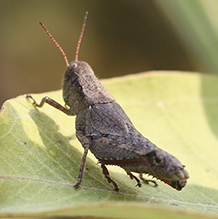 |
||||
Melanoplus scudderi |
|||||
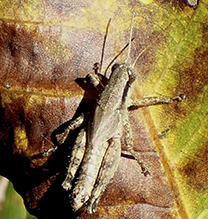 |
|||||
Melanoplus scudderi on oak leaf |
|||||
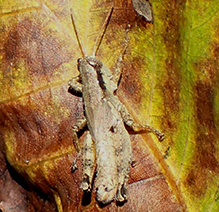 |
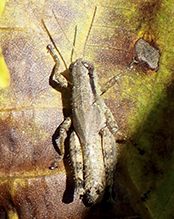 |
||||
Melanoplus scudderi m f |
|||||
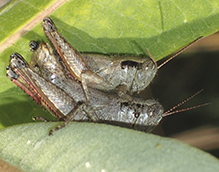 |
|||||
Luciearl |
|||||
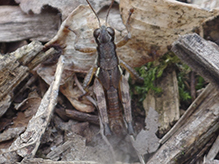 |
|||||
MinnesotaSeasons.com Photos |
|||||
|
|||||

Slideshows |
||

Visitor Videos |
|||
Share your video of this insect. |
|||
| This button not working for you? Simply email us at info@MinnesotaSeasons.com. Attach a video, a YouTube link, or a cloud storage link. |
|||
Other Videos |
|||
| SCUDDER'S SHORT WINGED GRASSHOPPER mating. Melanoplus scudderi Rob Curtis |
|||
About
Jan 1, 2018 Melanoplus scudderi SCUDDER'S SHORTWINGED GRASSHOPPER mating pair. Mark Twain NF, MO. 9/7/2017 |
|||


Created: 10/26/2020
Last Updated:
